Directions (1-5): Each of the following question is followed by two quantities I, and II. You have to determine the value of the quantities using the information provided and accordingly compare the quantities. Mark your answer as per the instruction set provided below.
(a) Quantity I>Quantity II
(b) Quantity I≥Quantity II
(c) Quantity I<Quantity II
(d) Quantity I≤Quantity II
(e) Quantity I=Quantity II or no relation
Q1. Quantity I: Time taken by Prabhas to cover a distance of 200 km (without stoppage) by car through which he covers a distance of 100 km in 1 hour when he stops to get fuel for 10 minutes.
Quantity II: Time taken by Nagarjuna to travel 20 km downstream if speed of boat and speed of stream be 7 kmph & 3 kmph respectively.
Q2. There are 3 red and 5 blue balls in the urn.
Quantity I: the probability of drawing 1 red ball and 2 blue balls.
Quantity II: the probability of drawing 2 red balls and 1 blue ball.
Q3. In how many ways can 4 boys or 5 girls be selected?
Quantity I: there are 20 persons (boys and girls only) in the group out of which 12 are boys.
Quantity I: the group comprises 10 boys and 10 girls.
Q4. Quantity I: The length & breadth of a rectangle of perimeter 48 cm are in ratio 5:3. Find Area?
Quantity II: 135
Q5. 1/a+1/b=?
Quantity I: a & b are roots of equation x²+x-6=0
Quantity II: a²+b²=20;ab=8
Directions (6 -10): Following are the questions based on two statements and answer the following based on the given statements.
Q6. What will be respective ratio of saving of Veer & Deepak.
Statement I . Income of Veer is 4% less than that of Sameer and also expenditure of Veer is 12.5% less than that of Sameer. Deepak spend ⅗ th of his income.
Statement II . Sameer save Rs. 7000 & Veer save Rs. 7400. Income of Deepak is Rs. 1000 more than that of Sameer.
(a) Only statement I is sufficient
(b) Only statement II is sufficient
(c) Statement I and II both together is sufficient
(d) Either statement I or Statement II alone is sufficient
(e) Neither statement I nor statement II is sufficient
Q7. What will be cost price of article, which marked 40% above.
Statement I. If article sold 25% discount profit will be Rs. 50.
Statement II. If article sold two successive discounts of ![]() and 10% profit will be Rs. 80.
and 10% profit will be Rs. 80.
(a) Only statement I is sufficient
(b) Either statement I or Statement II alone is sufficient
(c) Statement I and II both together is sufficient
(d) Only statement II is sufficient
(e) Neither statement I nor statement II is sufficient
Q8. A bag contains total 12 balls in which there are 5 green balls and rest are blue and red balls. What is difference between blue & red balls.
Statement I . If one ball taken out from bag probability of being either red or blue is 7/12.
Statement II. If two balls taken out from bag probability of being either red or blue is 1/6.
(a) Only statement II is sufficient
(b) Either statement I or Statement II alone is sufficient
(c) Statement I and II both together is sufficient
(d) Only statement I is sufficient
(e) Neither statement I nor statement II is sufficient
Q9. Side of square is 3.5 cm more than radius of circle. What will be area of square?
Statement I. Difference between circumference and diameter of circle is 45 cm.
Statement II. Radius of circle is 50% more than breadth of rectangle whose length is 15 cm. Ratio of circumference of circle & perimeter of rectangle is 3 : 2.
(a) Only statement II is sufficient
(b) Either statement I or Statement II alone is sufficient
(c) Statement I and II both together is sufficient
(d) Only statement I is sufficient
(e) Neither statement I nor statement II is sufficient
Q10. What will be length of train A?
Statement I . Relative speed of train A & B is 10 meters/sec when both running in same direction and length of train B is 240 (Speed of train B is more than speed of train A).
Statement II . Train B cross a pole in 8 sec and cross train A in 12 sec running in opposite direction.
(a) Only statement II is sufficient
(b) Either statement I or Statement II alone is sufficient
(c) Neither statement I nor statement II is sufficient
(d) Only statement I is sufficient
(e) Statement I and II both together is sufficient
Directions (11-14): In the following questions, two quantities (I) and (II) are given. You have to solve both the quantities and mark the appropriate answer.
Q11. Quantity I: If two dices are thrown simultaneously, then find the probability of getting sum more than 3 and less than 6.
Quantity II: A badminton doubles team is to be formed from 7 male players and 6 female players. Find the probability of forming a team with at least 1 male player?
(a) Quantity I < Quantity II
(b) Quantity I ≤ Quantity II
(c) Quantity I > Quantity II
(d) Quantity I ≥ Quantity II
(e) Quantity I = Quantity II or no relation.
Q12. Quantity I: A bus starts from city – X for city – Z via city – Y. Ratio of distance between city – X and city – Y to that of between city – Y and city – Z is 2 : 3. Bus goes from city – X to city – Y at 50 km/hr. and from city – Y to city – Z at 60 km/hr. If bus took total 9 hours to reach city – Z, then find total distance between city – Y & city – Z.
Quantity II: Ratio of length of train – A to that of B is 5 : 8 and speed of train – B is 25% more than that of A. Train – B can cross train – A in ![]() seconds while running in opposite direction and train – B can cross 200m long platform in 40 seconds. Find distance covered by train – A in 4 hours and 10 minutes.
seconds while running in opposite direction and train – B can cross 200m long platform in 40 seconds. Find distance covered by train – A in 4 hours and 10 minutes.
(a) Quantity I < Quantity II
(b) Quantity I ≤ Quantity II
(c) Quantity I > Quantity II
(d) Quantity I ≥ Quantity II
(e) Quantity I = Quantity II or no relation.
Q13. Quantity I: B and C together can do a work in 20 days where as B alone can do it in 52 days. If A alone can do the same work in 65 days, then find days taken by A and C together to complete the same work?
Quantity II: Q alone can do a work in 12 days while P and R together can do the same work in 6 days. If efficiency of P is 20% less than that of Q, then find in how many days P alone can complete twice of the actual work.
(a) Quantity I < Quantity II
(b) Quantity I ≤ Quantity II
(c) Quantity I > Quantity II
(d) Quantity I ≥ Quantity II
(e) Quantity I = Quantity II or no relation.
Q14. Quantity I: P gives 60% of his salary to Q. Q invested the money received from P for 2 years in a scheme at 20% p.a. at CI compounding annually. If total interest received by Q from the scheme is Rs.26400, then find total salary of P.
Quantity II: Difference between CI and SI earned on Rs.200000 in 2 years at R% p.a. is Rs.4500. If same amount is invested in scheme offering (R+5)% p.a. at SI for 4 years, then find the interest received from the scheme.
(a) Quantity I < Quantity II
(b) Quantity I ≤ Quantity II
(c) Quantity I > Quantity II
(d) Quantity I ≥ Quantity II
(e) Quantity I = Quantity II or no relation.
Q15. An article which costs Rs 500 was marked up by 20% above its cost price.
Quantity I: Discount percentage offered, when the article was sold at a price which gave a profit of Rs 50.
Quantity II: Profit Percentage, when two successive discounts each of 5% is offered.
(a) Quantity I>Quantity II
(b) Quantity I≥Quantity II
(c) Quantity I<Quantity II
(d) Quantity I≤Quantity II
(e) Quantity I=Quantity II or no relation
Solutions
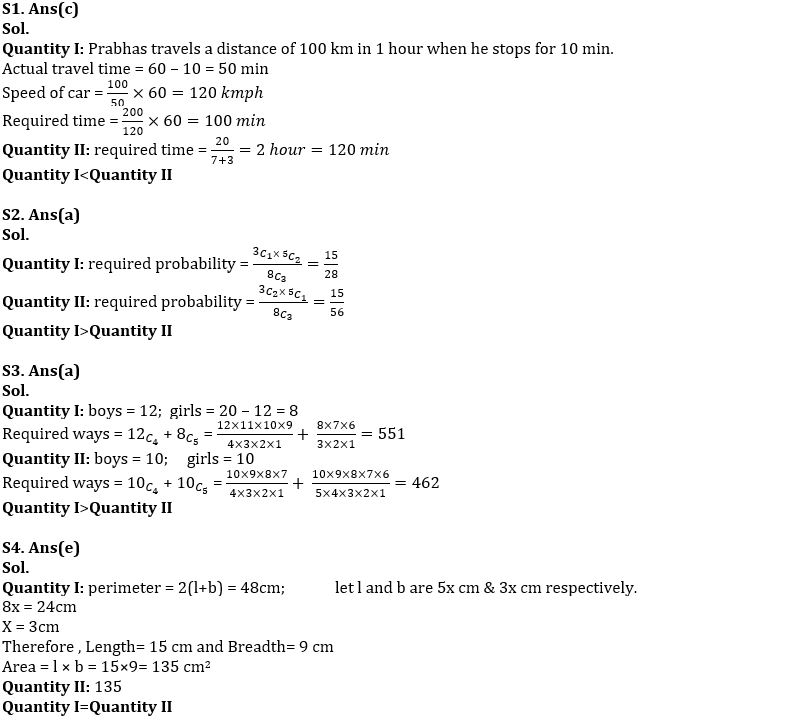
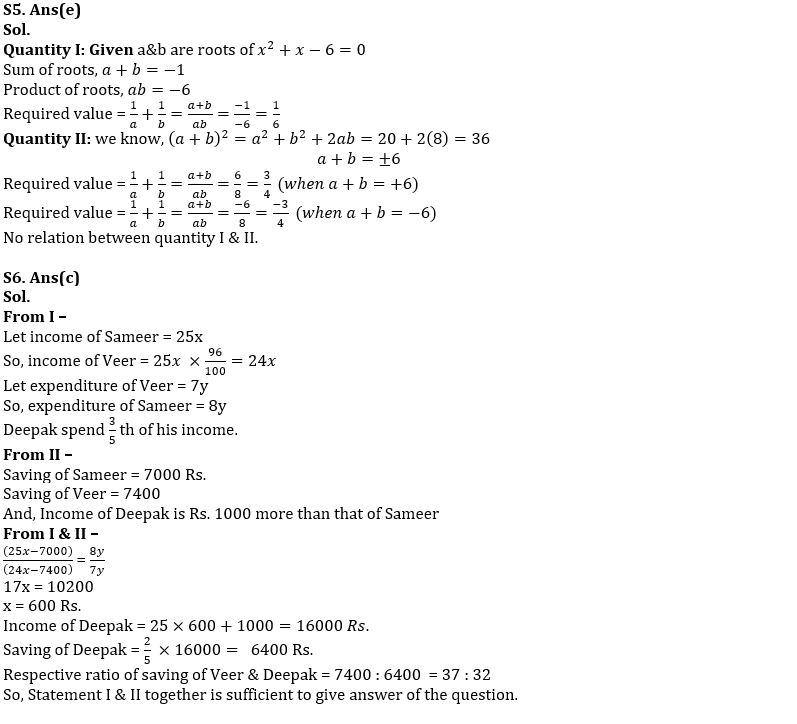
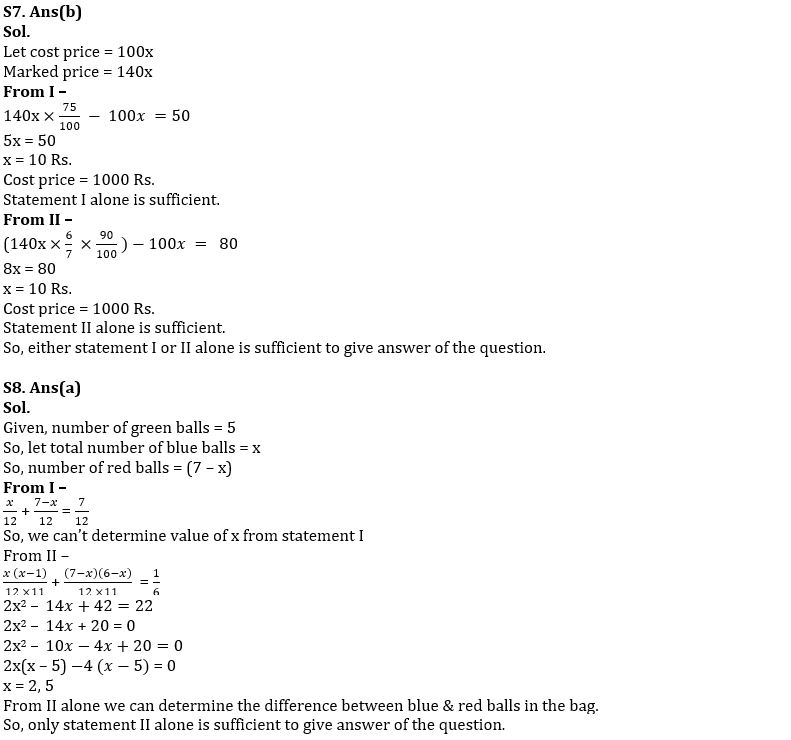
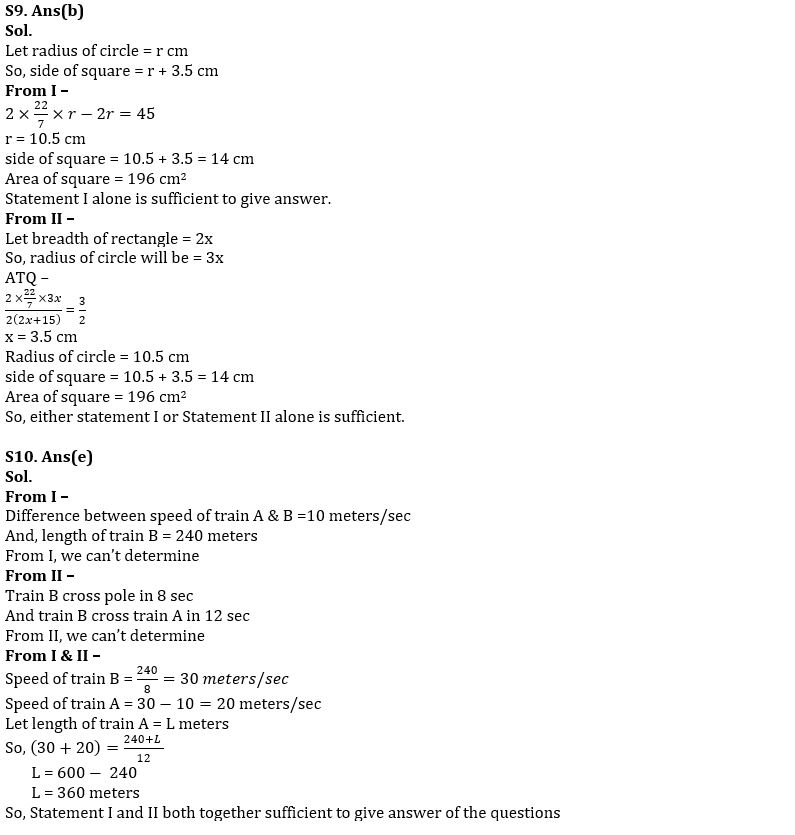
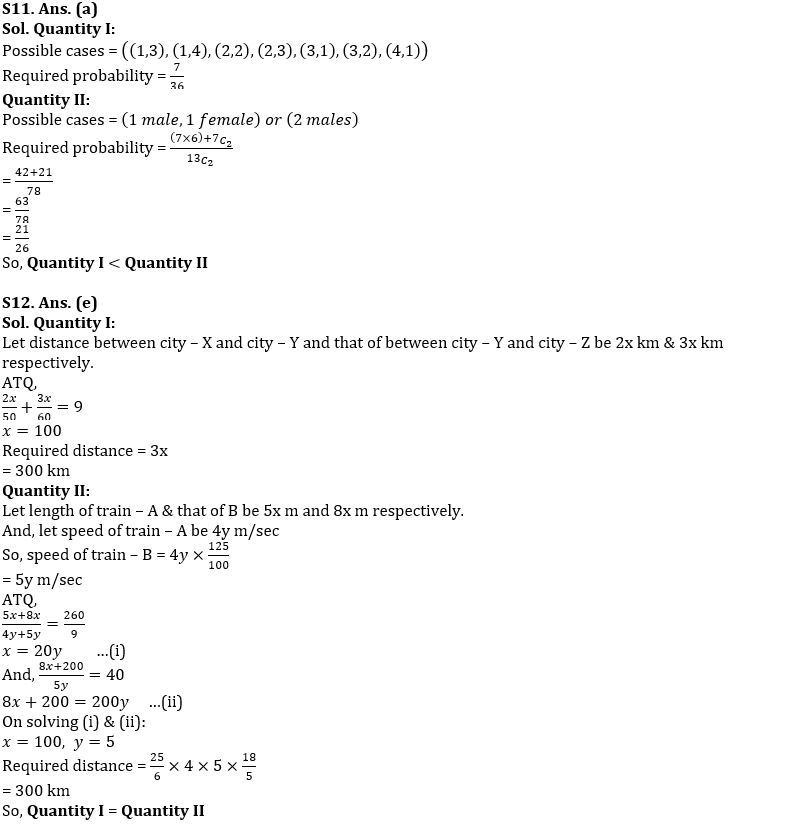
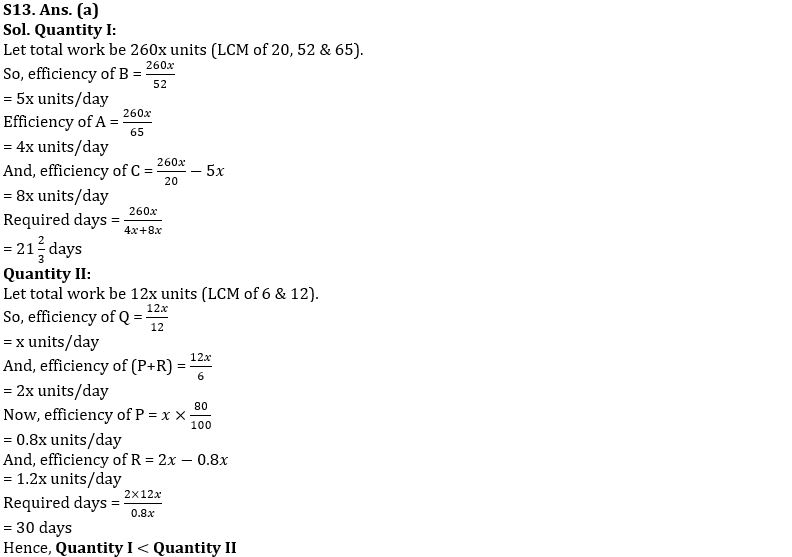
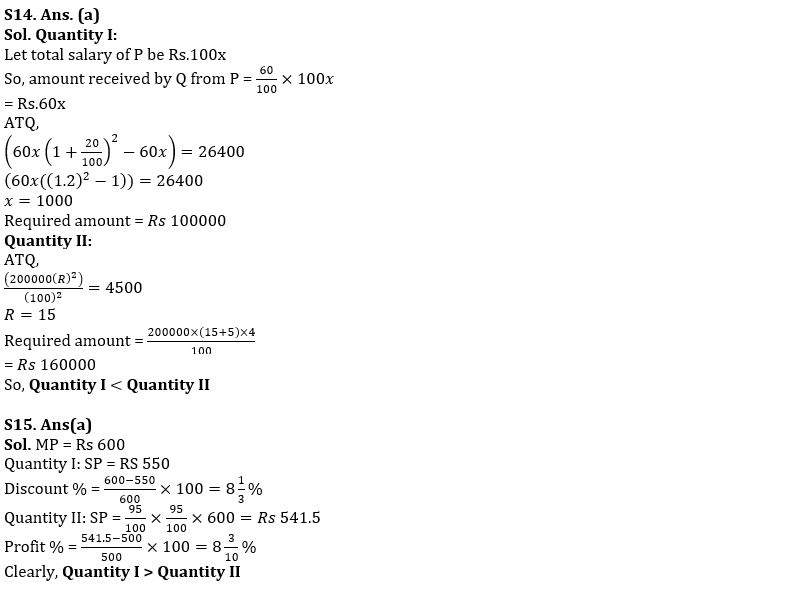


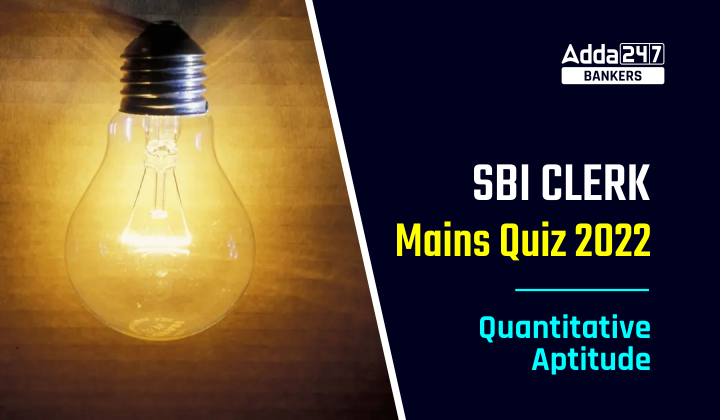


 Quantitative Aptitude Quiz For Bank Main...
Quantitative Aptitude Quiz For Bank Main...
 Quantitative Aptitude Quiz For Bank Foun...
Quantitative Aptitude Quiz For Bank Foun...




